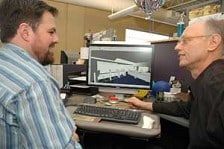Designs on the future
.floatimg-left-hort { float:left; } .floatimg-left-caption-hort { float:left; margin-bottom:10px; width:300px; margin-right:10px; clear:left;} .floatimg-left-vert { float:left; margin-top:10px; margin-right:15px; width:200px;} .floatimg-left-caption-vert { float:left; margin-right:10px; margin-bottom:10px; font-size: 12px; width:200px;} .floatimg-right-hort { float:right; margin-top:10px; margin-left:10px; margin-bottom:10px; width: 300px;} .floatimg-right-caption-hort { float:left; margin-right:10px; margin-bottom:10px; width: 300px; font-size: 12px; } .floatimg-right-vert { float:right; margin-top:10px; margin-left:10px; margin-bottom:10px; width: 200px;} .floatimg-right-caption-vert { float:left; margin-right:10px; margin-bottom:10px; width: 200px; font-size: 12px; } .floatimgright-sidebar { float:right; margin-top:10px; margin-left:10px; margin-bottom:10px; width: 200px; border-top-style: double; border-top-color: black; border-bottom-style: double; border-bottom-color: black;} .floatimgright-sidebar p { line-height: 115%; text-indent: 10px; } .floatimgright-sidebar h4 { font-variant:small-caps; } .pullquote { float:right; margin-top:10px; margin-left:10px; margin-bottom:10px; width: 150px; background: url(http://www.dmbusinessdaily.com/DAILY/editorial/extras/closequote.gif) no-repeat bottom right !important ; line-height: 150%; font-size: 125%; border-top: 1px solid; border-bottom: 1px solid;} .floatvidleft { float:left; margin-bottom:10px; width:325px; margin-right:10px; clear:left;} .floatvidright { float:right; margin-bottom:10px; width:325px; margin-right:10px; clear:left;} Rob Smith and Daryl Metzger saw the handwriting on the wall in the late summer and early fall of 2008. You couldn’t miss the handwriting – the economy was going into free fall. The question was whether to allow a sense of panic to creep into their business, Architects Smith Metzger P.C.
After more than a quarter century in the business, Smith had seen good economic times and bad. These days, optimism “is where I live,” he said.
That optimism is paying off in terms of a firm that is seeing an uptick in requests for proposals, has kept its staff intact, still celebrates with holiday parties and finds a reason for good cheer, even if the season doesn’t call for it.
Architecture often is held up as a gauge of future construction activity. Planning and design begins a good year before construction work begins. The American Association of Architects (AIA) publishes an index that attempts to predict the future by the number of jobs coming into its members’ offices.
In Greater Des Moines, much of that work during the recession was in the form of public projects – renovations, additions and some new construction. Federal stimulus and state I-JOBS dollars generate some activity.
Still, architects interviewed for this story reported that they are weathering the hard times.
Neumann Monson Architects, which is headquartered in Iowa City, has taken on long-time Des Moines architect William Anderson to open a local office.
“I’ve been very busy responding to requests for proposals,” Anderson said.
Tight credit makes it difficult to get those projects off the ground.
Smith said business owners are assessing the condition of the economy, taking a look at their own balance sheets and attempting to determine when they can launch a new project.
Smith wasn’t about to allow himself to believe that his business would be anything other than a bustle of activity during a slow time.
“When I started in 1983, I would read the business section and I would be happy one day and down the next,” Smith said. “Way back in the ’80s I decided I couldn’t run my business if I followed those trends. I just kind of go with it and figure you have to do the best you can.”
That was the message Smith and Metzger delivered to their staff of 10.
“We called a meeting during all the doom and gloom, maybe in November 2008, and said we’re hunkering down,” Smith said.
They would hunker down, but they wouldn’t run for cover.
“We said, ‘let’s do the best work with the work we have,'” Smith said. “I think the attitude was we have less to do but we’re not going to lower the bar on the work we have to do.”
They would have the annual holiday party because, well, “you can save more money on copy paper than you spend on a party,” Metzger said.
In addition, the firm had set a goal to have all of its staff certified as U.S. Green Building Council LEED Accredited Professionals. The last certification came in around Dec. 31, 2008, and that was cause for a celebration.
Smith and Metzger, who teamed up in in 1998 after being partners in separate firms, decided to curtail some continuing education classes, and there were no bonuses because there were no profits to share, Metzger said.
And the partners checked in frequently with their staff to find out who was feeling a little frazzled because of the economy.
“There was a lot of managing emotions,” Metzger said. “We knew it was important that we didn’t get freaked out.”
Smith and Metzger are close friends and business partners. One tends to finish another’s sentence. They chat, they interrupt and they follow the same line of thought.
As president of AIA Iowa, Smith knows that business conditions are much worse in other parts of the country. He mentioned one architectural firm that cut its staff from 40 to fewer than the 10 at Architects Smith Metzger. Layoffs are common in firms from coast to coast.
At least one Greater Des Moines architect declared bankruptcy last year, but Greater Des Moines has not seen a collapse in firms or employment.
Nationally, firms have averaged 20 percent to 40 percent staff reductions the past two years, said Cindi Michelsen, marketing coordinators for RDG Planning & Design in Des Moines.
“We, and other Iowa architects, are doing very well in comparison,” she said.
RDG Planning & Design reduced its staff to 105 from 108 last year, but has added another architect this year.
The firm has enough work to justify additional hiring, she said, but uncertainty about the the remainder of 2010 has it approaching those decisions with caution.
That uncertainty appears to be guiding development plans of potential clients.
“We’re staying busy, it’s just that the backlog for us hasn’t been as large as it has been in the past,” she said.
Michelsen noted that a majority of the firm’s work is in the public sector, particularly education. In addition, it provides planning, landscape architecture and engineering services. Diversity helps in a tough economy. Some work has been generated in the transportation sector, where both state and federal stimulus dollars have focused on bridge and road repair.
“We are seeing businesses do a lot of planning and looking forward to what they can do when the economy turns around or when they feel secure,” Michelsen said.
Smith said it would appear that the private sector is gearing up for growth.
Businesses are ready to emerge “from all the fear.”
“There’s not a lot of action there, but it seems to be growing. I’m sensing that the leaders of a lot of the companies have decided to get back to business and see how to make business work and not live with all of the fear that you hear about,” he said.
Smith noted that his firm is benefiting from some stimulus dollars, as well.
In addition, it is in the middle of a nearly $12 million renovation of Iowa State University’s Curtiss Hall, the school’s old Agricultural Hall. And on a recent day, Smith and Jay Reyhons were reviewing computer layouts of a planned remodeling at Grinnell State Bank.
All things considered, Architects Smith Metzger has emerged from difficult times as a stronger business, Smith and Metzger said, almost in unison.
“We are a group of 10,” Smith said. “And we feel like we are winners,” Metzger said.









